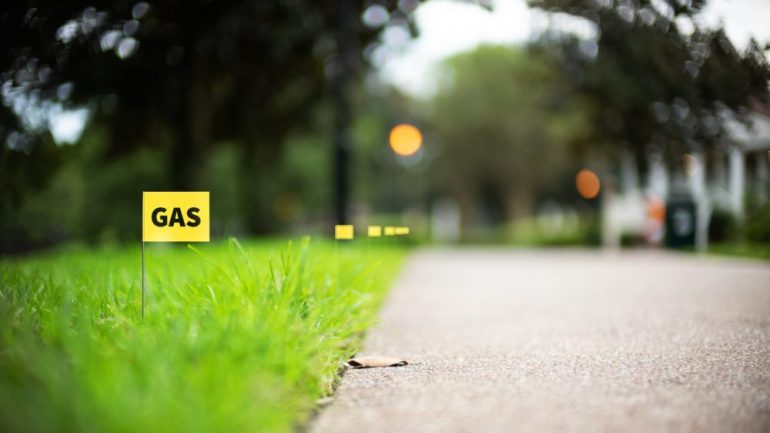Wouldn’t it be great to relax on your own deck, or gaze at a gorgeous new tree in your front yard? Before you pull out the shovel and start digging, take steps to avoid hitting utility lines, which could turn a dream project into a nightmare.
Utility line just below the surface
Millions of miles of electrical, gas, telephone and cable lines are buried in the ground across America. It’s easy to forget about them in your enthusiasm to landscape or begin outdoor construction. That’s why it’s crucial to know exactly where your utility lines are buried before you start digging. Not doing so can lead to expensive and even dangerous severing of utilities.
What could possibly go wrong?
There are four possible outcomes of cutting a utility line, none of them happy.
- Foremost is the personal danger of hitting a gas line, which can explode, or an electric line, which can electrocute you. Enough said.
- Second is the expense of paying to repair the line. The utility company will charge you, potentially thousands of dollars.
- Depending on your state, you may be violating the law If you dig, particularly deeper than 12 inches, without finding out where buried lines are located. Fines for severing a line are stiff.
- Damaging a utility line leaves your house without power, cable or television service, depending on what type of line you sever. The outage will last until the utility company can restore your service.
What to do?
You can avoid these issues simply by making a quick phone call. The Common Ground Alliance is the organization behind the public awareness campaign “Call Before You Dig.” Dial the telephone number 811 and you’ll be connected to a nationwide network that will help you locate the utility lines on your property. After you give the operator your address, local utility providers will be contacted to come and mark the location of their lines.
Call at least three days prior to digging to allow for time to mark the lines. Afterwards, if your project is close to any of the marked lines, dig carefully and check your work often to make sure you aren’t too close. Also, different lines may be at varying depths, so don’t assume after a few shovel thrusts that you are in the clear.
Look overhead
If you’re contemplating a project that involves overhead work, such as hoisting/rigging, excavating, tree work or doing construction up high, don’t forget about overhead power lines and equipment. Be aware of them and maintain a safe distance. Your local utility can tell you how much clearance to give these lines.
Related – Electricity: Your Home’s Risky Resource


